In this blog post, we have mentioned the 20 most beautiful tourist attractions in Delhi and New Delhi that you should definitely visit.
I recently visited Delhi and explored major tourist attractions like India Gate, Lotus Temple, Humayun Tomb, Akshardham Temple etc. If you are also planning to explore tourist sites, this article will be helpful for you.
Delhi is the capital city of India. It is India’s one of the most visited places by tourists. Millions of domestic as well as foreign tourists visit Delhi per year.
According to an estimate, almost 37.32% of the total foreign tourists came from the USA, followed by UK and Germany. On the other hand, the highest proportion of domestic tourists was from Uttar Pradesh followed by Punjab.
There are a large number of historical monuments, museums, pilgrimages etc in Delhi that can be seen easily.
The most famous buildings like Red Fort, Parliament, Rashtrapati Bhawan, India Gate, Qutub Minar etc are located in Delhi, so you can experience all of them after visiting Delhi.
Suggested – Best Food Tours in Delhi
Most Beautiful Tourist Attractions in Delhi
1. India Gate
Old India Gate is indeed a memorial site on the eastern border of New Delhi’s “ceremonial axis,” previously known as Kingsway, just on Rajpath.
The gate is etched with the names of 13,300 personnel, including several British soldiers and commanders.
The gateway, developed by Robert Edwin Lutyens, is reminiscent of monumental arches such as the Bridge of Titus in Rome and is sometimes likened to the Panthéon in Paris.
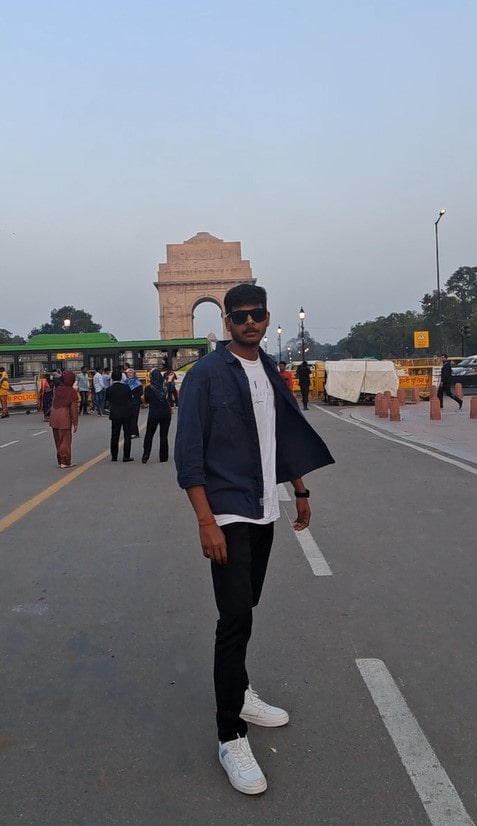
A black granite pedestal with an inverted rifle, crowned by a military helmet, and bordered by four everlasting flames, was created under the gateway during the Freedom Struggle of Bangladesh in 1972.
- Timings – All day and Night
- Entry fee – No Entry fee
- Nearest Metro Station – Central Secretariat
2. Akshardham Temple
In Delhi, India, Swaminarayan Akshardham is a temple and divine complex. The shrine is located near the Noida boundary.
The structure, also known as Akshardham Mandir or Akshardham Delhi, showcases centuries of historical and contemporary Hindu culture, philosophy, and design.

It was built by BAPS and was motivated by Yogiji Maharaja and produced by Pramukh Swami Maharaj.
The main altar is the central focus of Swaminarayan Akshardham and preserves the complex’s central location.
There are several display rooms that convey facts about Swaminarayan’s biography and activities. To develop the different display spaces, the building’s architects used modern methods of interaction and innovation.
- Timings – 9:30 AM to 6:30 PM
- Entry Fee – No fees
- Nearest Metro Station – Akshardham Mandir Metro Station
3. Red Fort
The Red Fort, also known as Lal Qila, is a mediaeval building in Old Delhi, Delhi, India, that functioned as the Mughal Rulers’ principal palace.
When Sultan Shah Jahan chose to move his headquarters from Agra to Delhi, he ordered the building of the Red Fort on May 12, 1638.
Its architecture, which was initially red and white, is due to designer Ustad Ahmad Lahori, who not only built the Taj Mahal.

Under Shah Jahan, the fort marks the pinnacle of Mughal construction, combining better-in-time palace buildings with Indian customs.
Following Nadir Shah’s conquest of the Mughal Dynasty in 1739, the castle was looted of its artistry and valuables.
- Timings- 9:30 AM to 6:30 PM
- Entry Fee- 35Rs
- Nearest Metro Station – Lal Quila Metro station
Related – Most Beautiful Sites in Agra
4. Rashtrapati Bhawan
The Rashtrapati Bhavan is the President of India’s official home, located on the Rajpath in Delhi, India.
Rashtrapati Bhavan may pertain to the whole 130-hectare Presidential Estate, which contains the presidency greenery, outdoor spaces, houses for security detail and employees, barns, other office buildings, and utility companies within its exterior walls.

It also might relate to the 340-room primary housing complex, the leader’s main address, which includes ceremony hallways, rooms, and office buildings, also known as the manor house.
It is the nation’s biggest house in terms of geography for any leader of the country.
- Timings – 9 AM to 4 PM (closed on MTW)
- Entry Fee – 50 Rs
- Nearest metro station – Udyog Bhawan, Central Secretariat, Patel Chowk Metro Station
5. Qutub Minar
The Qutub Minar is a tower and “winning tower” that’s also part of the Qutub structure, which is located on the location of Lal Kot, Delhi’s earliest walled city constructed by the Tomar Rajputs.
It is located in the Mehrauli neighbourhood of South Delhi, India, and is a UNESCO World Heritage Site. It was largely erected from 1199 to 1220 and is among the city’s most famous tourist attractions.

It can be likened to the 62-meter all-brick Mihrab of Jama in Afghanistan, which was built in 1190, a decade or more before the Delhi building’s likely commencement. Both have intricately adorned surfaces with writing, depending on the type.
- Timings – 7 AM to 5 PM
- Entry Fee – 30Rs
- Nearest Metro Station – Qutub Minar Metro Station
6. Jantar Mantar
Jantar Mantar is headquartered in New Delhi, a contemporary metropolis. “Jantar Mantar” literally translates to “equipment for gauging the heavens’ concord.”
There are 13 buildings with astronomical equipment in all. From 1723 onwards, Maharaja Jai Singh II of Rajasthan established five sites to revise the calendars and scientific tables.

Jai Singh, born in 1688 into the noble Rajput dynasty that ruled the region realm, grew up during a time when astrology was a popular subject of study.
An inscription atop one of the buildings of New Delhi’s Jantar Mantar telescope was installed there in 1910, incorrectly attributing the building’s creation to the year 1710.
- Timings – 10 AM to 6 PM
- Entry Fee – 15Rs
- Nearest Metro Station – Rajiv Chowk Metro Station
7. Humayun’s Tomb
Humayun’s mausoleum is the Mughal Emperor Humayun’s tomb in Delhi, India. Empress Begum Humayun’s principal consort, commissioned the mausoleum in 1558, and it was constructed by Mirak Mirza Ghiyas and his son, Sayyid Muhammad, Persian designers selected by the queen.
It is situated in Nizamuddin Eastern, Delhi, India. It was the first large-scale construction to employ red sandstone.
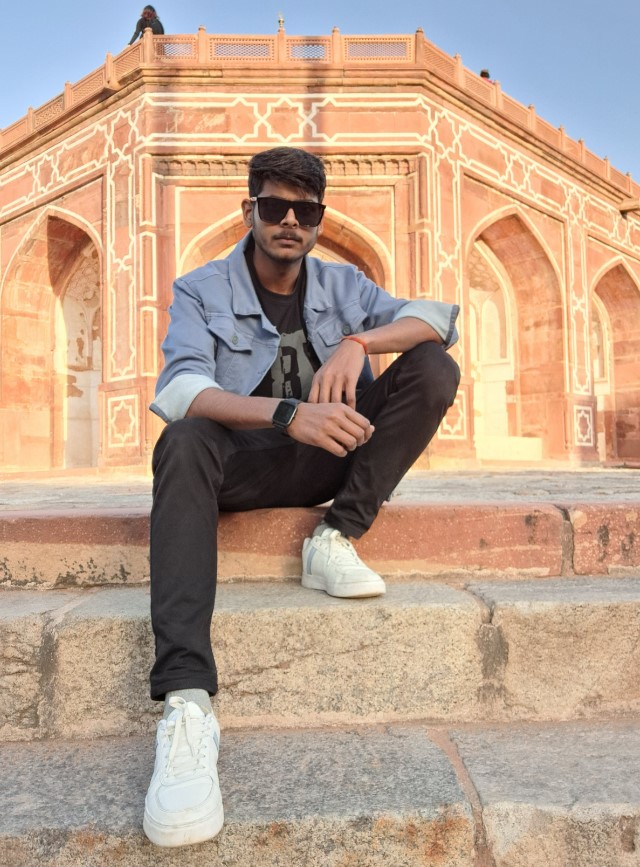
The mausoleum was designated by UNESCO in 1993, and substantial repair work has been completed since then.
Apart from the primary tomb compartment of Humayun, many smaller landmarks dot the paths leading up to it from the entrance gate inside the West, including the one that even precedes the main tomb by twenty years.
- Timings – 6 AM to 6 PM
- Entry Fee – 30 Rs
- Nearest Metro Station – JLN Stadium Metro station
8. Chhatarpur Temple
The Chhatarpur Temple is in the heart of Chhatarpur, Delhi, India. Devi Katyayani is honoured at this temple. The temple complex has a landmass of 70 acres.
It lies 4 kilometres (2.5 miles) beyond Qutub Minar, off the Mehrauli-Gurgaon route, near Chhatarpur, in the southwest suburbs of Delhi.

Even before Akshardham Temple was built in Delhi in 2005, this mandir was the second largest in the whole world.
This temple is entirely made of marble, with jaali work on all of its surfaces. It belongs to the Venetian architectural style.
- Timings – 4 AM to 11 PM
- Entry fee – No Fees
- Nearest Metro station – Chhatarpur Metro station
9. ISKCON Temple
The ISKCON Delhi temple, also known as Sri Radha Parthasarathi Mandir, is a well-known Vaishnav temple dedicated to God Krishna and Devi Radha in the shape of Radha Parthasarathi.
Atal Bihari Vajpayee and former Commander Minister of Delhi Sahib Singh Verma, as well as Sushma Swaraj, opened the mandir on April 5, 1998. It’s in the Hare Krishna Hills, in New Delhi’s East Kailash neighbourhood.
Achyut Kanvinde, who volunteered to undertake a pro-bono mandate to create this temple for Srila Prabhupada’s devotees in 1993, planned and constructed the ISKCON Temple, which is one of India’s leading Hindu temples.
It has an available capacity for priests and workers. It features many halls for administrative functions as well as other lectures. It’s broken down into four components.
- Timings – 4:30 AM to 9:00 PM
- Entry Fee – No Fees
- Nearest Metro Station – Nehru Place Metro Station
Related – Religious Sites in Uttar Pradesh
10. Lotus Temple
The Lotus Temple is a Bahá’ religious building in Delhi, India, that was consecrated in December 1986. It has now become a popular tourist destination due to its flower-like form.
The Lotus Temple, like all other Bahá’ religious buildings, is open to everyone, irrespective of faith or other qualifications.
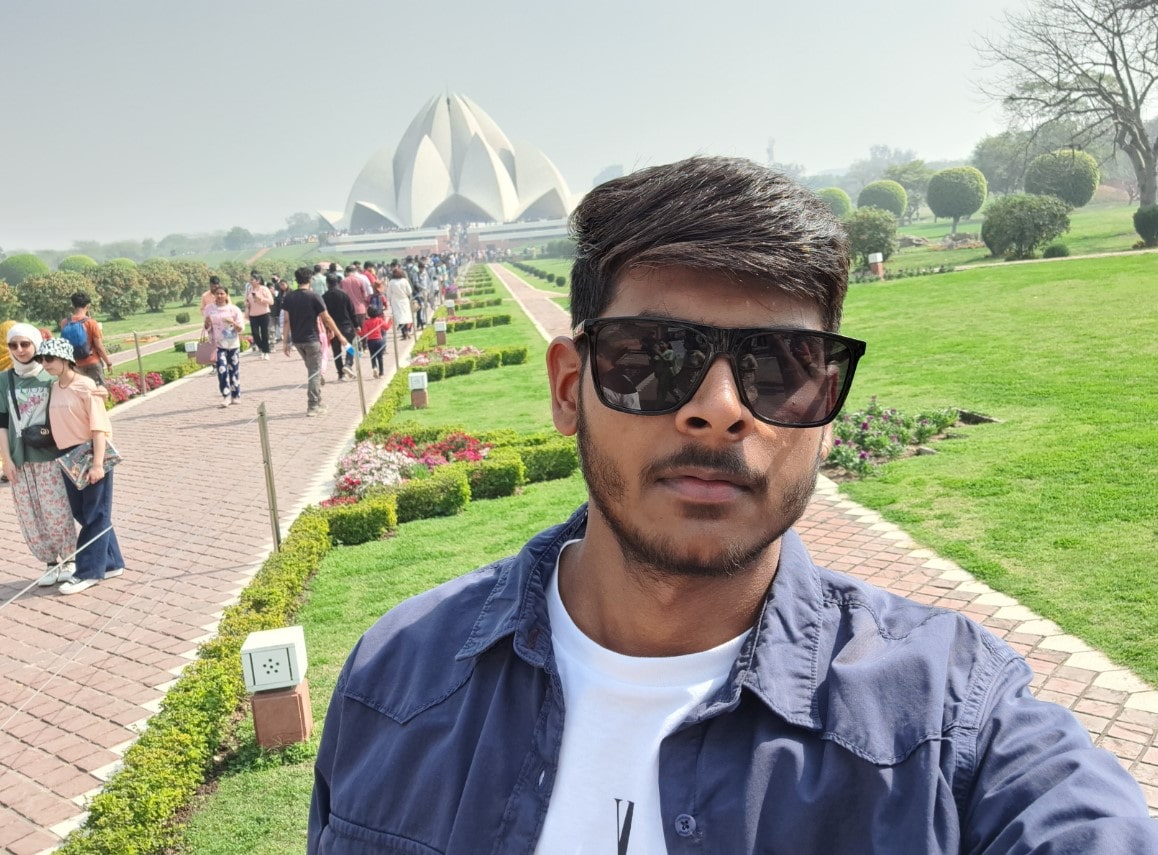
The structure is made up of 27 unrestricted travertine “petals” grouped in three-pedal clusters to create nine angles, with nine doorways leading to the main atrium with an elevation of little more than 34 metres and a capacity for 1,300 guests.
The Lotus Temple has indeed been highlighted in countless newspaper and magazine publications and has won multiple architectural honours.
- Timings – 9:00AM to 7:00PM
- Entry Fee – No Fee
- Nearest Metro station – Kalkaji Mandir Metro Station
11. Jama Masjid
The Masjid-i Jehan-Numa, often known as the Delhi Jama Masjid, is one of India’s biggest mosques.
It was established between 1650 and 1656 by Mughal Emperor Shah Jahan and dedicated by the first Sheikh, Syed Abdul Ghafoor Shah Bukhari.
It was the royal masjid of the Mughal emperors till the empire’s fall in 1857, and it was located in the Muslim capital of Shahjahanabad.

Long after the colonial era, the Jama Masjid has been seen as a symbol of Islamic dominance in India. During numerous crucial eras of British authority, this was also a political hotspot.
It is still in operation and it is one of Delhi’s greatest famous landmarks, intimately associated with the Old Delhi culture.
- Timings – 7 AM to 12Noon and 1:30 PM to 6:30 PM
- Entry Fee – No Fee
- Nearest Metro station – Jama Masjid Metro station
12. Purana Quila
Purana Qila is among Delhi’s most historic forts. Many believe it was built on the location of the ancient city of Indraprastha by the 2nd Mughal Dynasty under Humayun and Surid Sultan Sher Shah Suri.
The fort served as the city of Dinpanah’s innermost fortress. The Mathura Highway in Delhi separates it from the Dhyanchand Stadium, which is located close to the large Pragati Plaza reception area.
The castle’s ramparts rise to 18 metres in height, span 1.5 kilometres, and include pleated curtain portals: the Bara Darwaza looking west, which is still in operation nowadays; the culver city, also called the ‘Humayun Gate,’ and finally, the ‘Talaqi Gate,’ also regarded as the “forbidden entrance.”
- Timings – 10:00 AM to 5:00 PM
- Entry Fee – 5Rs
- Nearest Metro station – Pragati Maidan Metro Station
13. Bangla Sahib Gurudwara
Gurudwara Bangla Sahib is a notable Sikh gurdwara in Delhi, India, and is noted for its affiliation with Guru Har Krishan, the 8th Sikh Guru, as well as the sacred pond famous as the “Sarovar” within its own structure.
It was initially established as a tiny temple in 1783 by Sikh Commander Sardar Baghel Singh on the villa provided by Maharaja Raja Jai Singh of Amber, which oversaw the building of 9 Sikh shrines in Delhi under the rule of Mughal Emperor Alam II in that year.
- Timings – 9:00 AM to 10:00 PM
- Entry Fee – No Fee
- Nearest Metro station – Rajiv Chowk Metro Station
14. Raj Ghat
Mahatma Gandhi’s monument, Raj Ghat, is located in Delhi, India. It was once the title of a famous Old Delhi bagh.
The fortified city’s Raj Ghat Gateway, which opened at Raj Ghat on the western side of the Yamuna River, was close by and east of Daryaganj. Raj Ghat was indeed the name given to the memorial place afterwards.
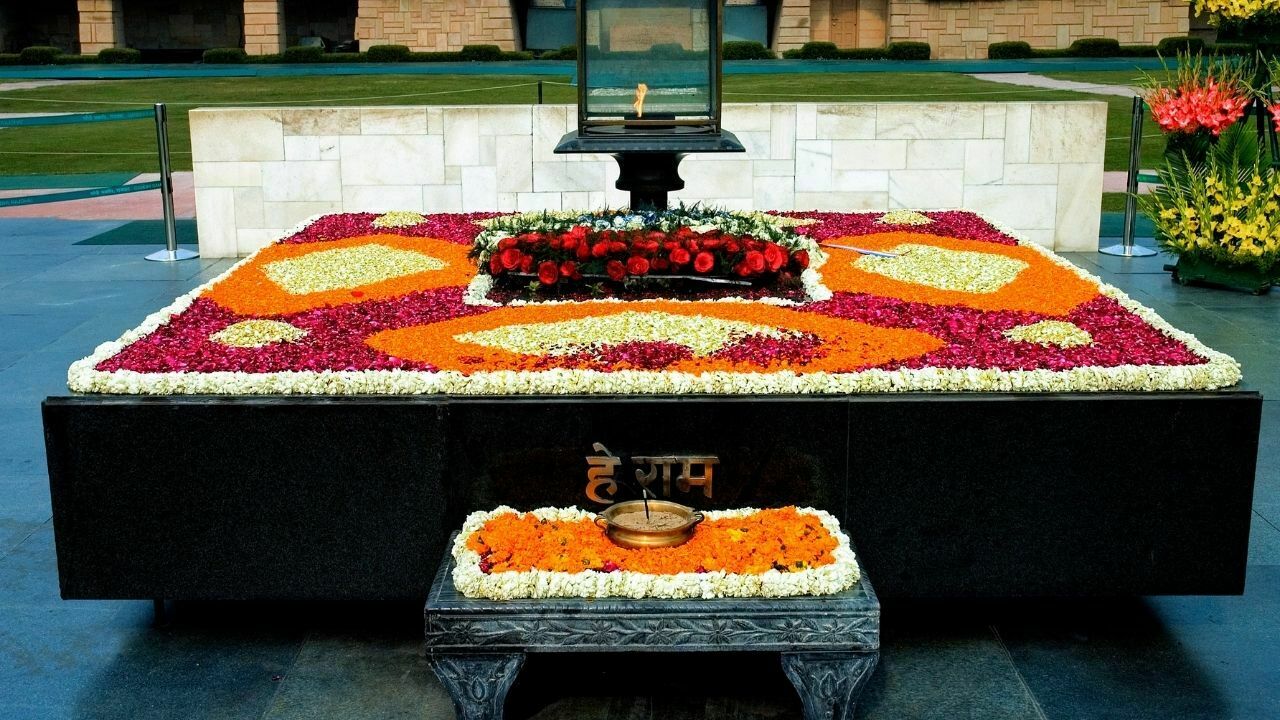
This is a black marble pedestal that symbolises the location of Mahatma Gandhi’s burial, which took place in Antyeshti on January 31, 1948, one day after his killing.
Unlike an eternal flame burning at a single end, it is left exposed to the sky. A stone pathway surrounded by gardens leads to the walled enclosures that hold the memorial, which is situated on Delhi’s Ring Road, formally called Mahatma Gandhi Road.
- Timings – 6:30 AM to 6:00 PM
- Entry Fee – No Fee
- Nearest Metro station – Delhi Metro Station
15. Hauz Khas Fort
A sprinkler system, an Islamic school, a masjid, a cemetery, and palaces are erected around an urbanised town in Hauz Khas, South Delhi, with a historic background dating back to the Delhi Sultanate’s reign in the 13th century.
This was a component of Siri, the Alauddin Khalji Monarchy’s Delhi Sultanate’s 2nd mediaeval city in India. Allauddin Khilji was the first to construct a large water reservoir or lake to give water to the people of Siri.
During Firuz Shah Tughlaq’s reign, the tank was de-silted. Several structures and tombs were constructed facing the water reservoir or lake.
The L-shaped architectural complex that faces the tank pivots around Firuz Shah’s mausoleum.
- Timings – 10:30 AM to 7:00 PM
- Entry Fee – No Fee
- Nearest Metro station – Hauz Khas Metro Station
16. Agrasen Ki Baoli
Agrasen Ki Baoli is indeed a historic stepwell in New Delhi, India, that is 60 metres long and 15 metres broad.
The Archaeological Survey of India (ASI) recognised Jantar Mantar as a scheduled landmark under the Ancient Buildings and Historical Structures and Graves Act of 1958, and it is located on Hailey Street near Connaught Square.
Although no historical sources exist to confirm who constructed the following steps, it is said to have been created by the mythical monarch Agrasen, and the current construction suggests that it was restored in the fourteenth century by the Delhi Sultanate’s Tughlag or Lodi dynasty.
The Baoli is accessible from 9 a.m. to 5:30 p.m. every day.
- Timings – 7:00 AM to 6:00 PM
- Entry Fee – No Fee
- Nearest Metro station – Barakhamba Road Metro Station
17. Sarojini Nagar Market
Sarojini Nagar was once known as Vinay Nagar but also Beena Road, Laxmi Bai Colony was known as East Vinay Nagar, and Netaji Marg was known as West Vinay Nagar.

This colony is surrounded by Safdarjung Corridor, South Expansion, Laxmibai Bhavan, Nauroji Marg, Chanakyapuri, and Netaji Nagar, and is renamed after the great lady independence warrior Sarojini Naidu.
It is located near Chanakyapuri, which houses a number of embassies around the world, notably those of the USA and Russia.
- Timings – 10:00 AM to 9:00 PM
- Entry Fee – No Fee
- Nearest Metro station – Sarojini Nagar Metro Station
18. Dilli Haat
Dilli Haat is a Delhi-based unregulated market, snack promenade, and artisan mart that charges admission.
Dilli Haat is a regular market maintained by the Delhi Tourist and Transportation Development Corporation (DTTDC), but unlike the traditional weekly marketplace, the hamlet of Haat.
It is situated in South Delhi’s business district, directly across from the INA market.

This complex was built on 6 acres of property that were recovered as part of a reclaiming operation and turned into a promenade.
The plaza has a village feel because of the extensive foundation construction, modest thatched-roof homes, and kiosks. Dilli Haat’s culture and surroundings are excellent.
- Timings – 10:30 AM to 10:00 PM
- Entry Fee – 30Rs
- Nearest Metro station – INA Metro Station
19. Khan Market
Khan Market is a retail company and shopping centre in New Delhi, India.
It was founded in 1951 by the newly formed Rehabilitation Ministry of the Government of India to provide economic opportunities to refugees from India’s Separation, particularly some from the Northern Parts State (NWFP), presently Khyber Pakhtunkhwa, a Pakistani province.
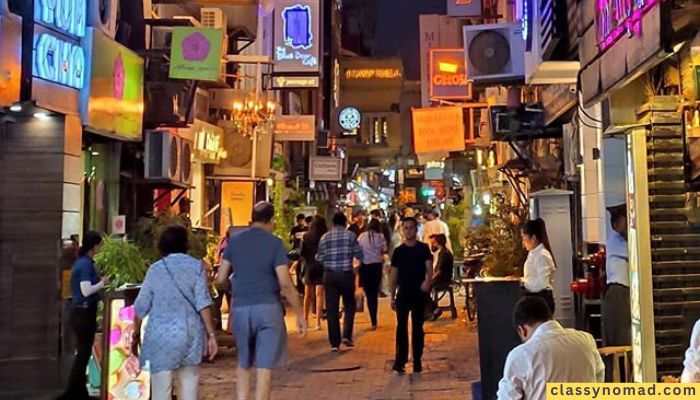
Many of these refugees had landed in Delhi. Khan Abdul Jabbar Khan, also known as Dr. Khan Sahib, was the Prime Minister of the NWFP from 1945 to 1947 and is credited with assisting many refugees in fleeing violence.
Khan was the older brother of Khan Abdul Gaffar Khan, a Pashtun and Indian independence leader.
- Timings – 10:00 AM to 11:00 PM
- Entry Fee – No Fee
- Nearest Metro station – Khan Market Metro Station
20. Lodhi Gardens
Lodi Garden is an Indian local park in New Delhi. It includes Mohammed Shah’s Monument, Sikandar Khan Lodi’s Mausoleum, Shisha Gumbad, and Bara Gumbad, artistic masterpieces from the fifteenth century by Lodis, who governed portions of north India, Punjab, and the Khyber region of modern-day Pakistan from 1451 to 1526.
The Archaeological Census of India presently protects the site.
Exercise and strolling enthusiasts go to Lodi Garden. The grounds are located on Lodi Road opposite Khan Bazaar and Safdarjung’s Monument and are a favourite area for Delhiites to go for morning walks.
- Timings – 5 AM to 8 PM
- Entry Fee – No Fee
- Nearest Metro station – Jorbagh Metro Station
Conclusion – Tourist Sites in Delhi
There are the most famous tourist attractions in Delhi that are worth visiting. From ancient buildings to the most advanced and modern buildings, from very small huts to skyscrapers, you can all see in Delhi.
You can experience the Independence Day parade at India Gate on August 15. Apart from it, there are so many things to do in Delhi.
I hope this blog post will be helpful to you. If you find this blog post informative, you can share it with your friends, relatives and family.
Suggested – Best Night Tours in Delhi
FAQs – Tourist Sites in Delhi
1. What are the main tourist attractions in Delhi?
Red Fort, India Gate, Rashtrapati Bhawan, Qutub Minar, Jantar Mantar, Akshardham Temple, ISKCON Temple, Lotus Temple, Dilli Haat, and Jama Masjid are the most beautiful tourist attractions of Delhi.
2. Where do billionaires live in Delhi?
Jor Bagh, Greater Kailash, Vasant Kunj, Golf Links, Gulmohar Park, Shanti Niketan, and Defence Colony are the areas where the richest people of Delhi live.
3. What is famous Delhi food?
On the visit to Delhi, you must try Paranthas, chaat, butter chicken, kebabs, Chole Bhature, biryani, rolls, samosa, and Gol Gappa as these are the most famous food in Delhi.
4. Where do foreigners stay in Delhi?
The majority of foreigners live in Chanakyapuri, Sundar Nagar, Shanti Niketan, Satya Niketan, Anand Niketan, Vasant Vihar, and Golf Link areas in Delhi.
5. Is Delhi safe for foreigners?
Yes. Delhi is completely safe for foreigners.

